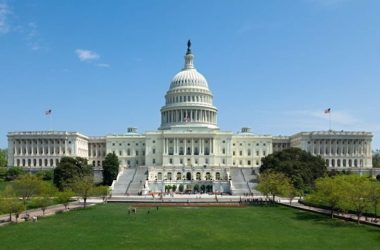By Greg Kozera
Throughout American history individuals or small groups have made a big difference. Recently, I was a guest on an Oklahoma radio show about energy and manufacturing. One of the listeners asked if I had seen the PBS Documentary Sherwood Forest. It aired in January. I hadn’t heard of it. He sent me the link to the movie. It’s a great story of the hard work, ingenuity, teamwork, bravery and dedication of 46 American men who helped win WWII and our continued freedom. It’s important for us to understand our history. Here is a brief summary of the story.
In 1943, France and most of Europe had fallen to the German 3rd Reich. Hitler was now focused on Great Britain. British cities had been getting shelled for three years. Only the British Air Force stood between Hitler and an invasion of Britain. Packs of German U Boats roamed the north Atlantic taking out American ships hauling oil to Britain for fuel and lubrication for their Air Force and Navy. The oil in those ships also gave light, heat and comfort to the British people. It refrigerated medicines and sterilized instruments for surgery. Hitler understood the importance of oil. Germany had very little. They were able to turn their coal into liquid fuel. This was a time-consuming process and it couldn’t produce the same high-octane fuel that crude oil can. To get the oil he needed Hitler invaded North Africa, Middle East countries and Russia.
German U-Boats off the U.S. coasts sank tankers hauling oil from wells in Texas and Oklahoma to refineries in the northeast. The U.S. solved much of its problem by building a 24-inch pipeline to carry crude oil over 1,200 miles from Texas to New Jersey. Construction started in June 1942 and was finished in June of 1943, one year later! But this didn’t solve Great Britain’s oil shortage problem.
Britain had one oil field, in Sherwood Forest, the same forest made famous by the stories of Robinhood and his merry men. Darcy Exploration, a British company was drilling the oil wells. It took them 5-8 weeks to drill and complete a single well. At this rate they could never produce enough oil to fuel the British Air Force. Phillip Southwell, a director for Darcey Exploration knew he needed help and flew to the USA to get additional drilling rigs and crews. Because of gasoline rationing, Southwell barely made it to Oklahoma to meet with Lloyd Noble who had a drilling company. Southwell wanted rigs and crews to drill in Britain. Lloyd refused. His rigs were already busy drilling wells to produce oil for the American war effort. Southwell’s persistence convinced Noble of the importance of the British project.
Lloyd was able to put together four rigs. He gave Gene Rosser, a leader with experience, the role of leading the project. They found Don Walker an expert in logistics to be Gene’s assistant. Rosser was able to find 44 roughnecks to man the crews who would drill the wells. Each rig was to have two 5-man crews. They would need to work 12 hours a day, 7 days a week. The goal was to drill 100 wells in a year. Germany had spies all over the USA. This project was TOP SECRET. If the Germans learned of it they could keep the crews and rigs from getting to Britain. The Germans would bomb the drilling sites if they learned of them. The 46 men only knew they were going to Britain but not where. The equipment was all painted green to blend in with the forest. Lighting at night was minimal and had to be directed downward.
The Americans were housed in a monastery in a small town close to the forest. The town’s people were told the men were there to make a John Wayne movie. While they were waiting for their rigs to come from America the crews started work using the Darcey Exploration rigs. Darcey Exploration was run by rules from the top down to the men in the field on the rigs. The Darcey rule was to change the drill bit every 30 feet no matter what. A very time-consuming process requiring all the drill pipe to be taken out of the well to change the bit and then run it back in. For the Americans, decisions on when or if the drill bit needed changed were made by the men in the field. The Americans stunned the Brits by drilling 1,000 feet the very first day, eliminating 33 time-consuming trips with the drill pipe. American crews also initiated other efficiencies and drilled wells in 7 days per rig instead of Darcey’s 5- 8 weeks per rig.
The Americans exceeded the goal, drilling 106 wells in a year and producing over 3 million critical barrels of oil to keep the British Air Force flying. The American drillers didn’t know about the planned D-Day invasion. The oil they produced made it possible. Following D-Day a pipe was run across the English Channel carrying British oil into France to fuel the Allied armies allowing them to march to Berlin.
My uncle was part of General Patten’s army. He told us about the dead German tanks they marched past that had run out of fuel. Lloyd Noble paid the 46 men and for the equipment. He didn’t charge Britain a dime. Lloyd considered it his contribution to the war effort. Some lessons we can learn;
- A small motivated team can make a big difference.
- People closest to the work can make better decisions than executives miles away.
- The Brits and Americans became a team. Teamwork is essential for success.
- Oil was essential in WWII and is still essential for our national security and freedom.
- We must learn from history or repeat past mistakes.
To watch the entire movie, google “PBS Sherwood Forest”
Greg Kozera/, [email protected] is the Director of Marketing and Sales for Shale Crescent USA. www.shalecrescentusa.com (You can follow SCUSA on Facebook) He is a professional engineer with a Masters in Environmental Engineering and over 40 years’ experience in the energy industry. Greg
is a leadership expert, high school soccer coach, professional speaker, author of four books and numerous published articles.




